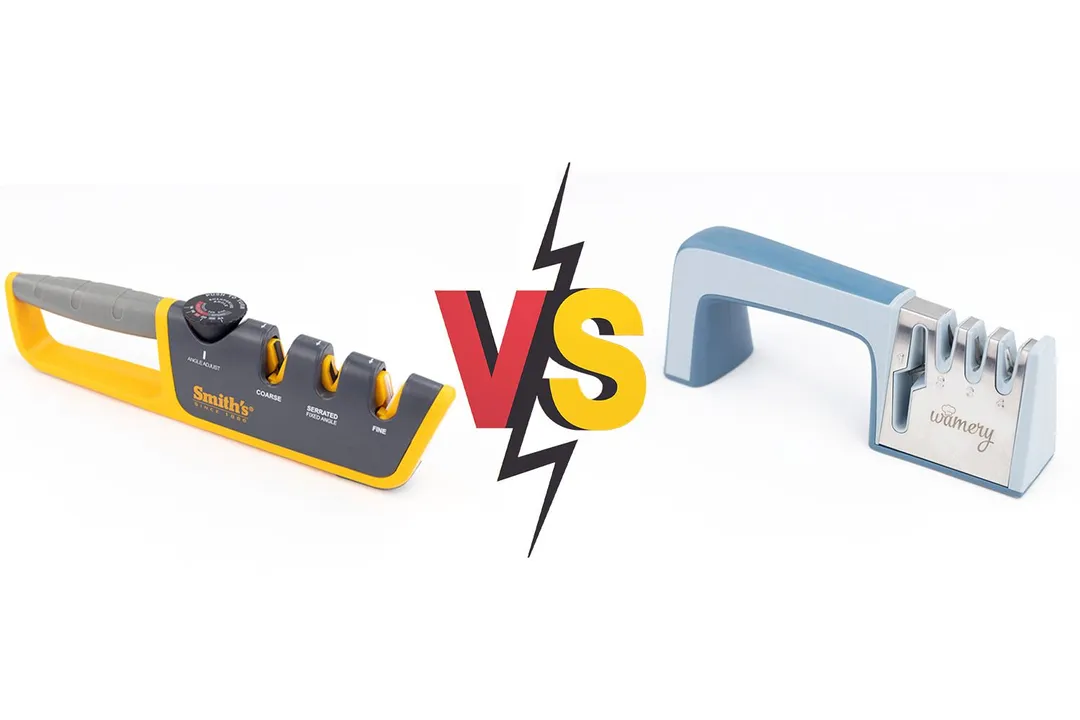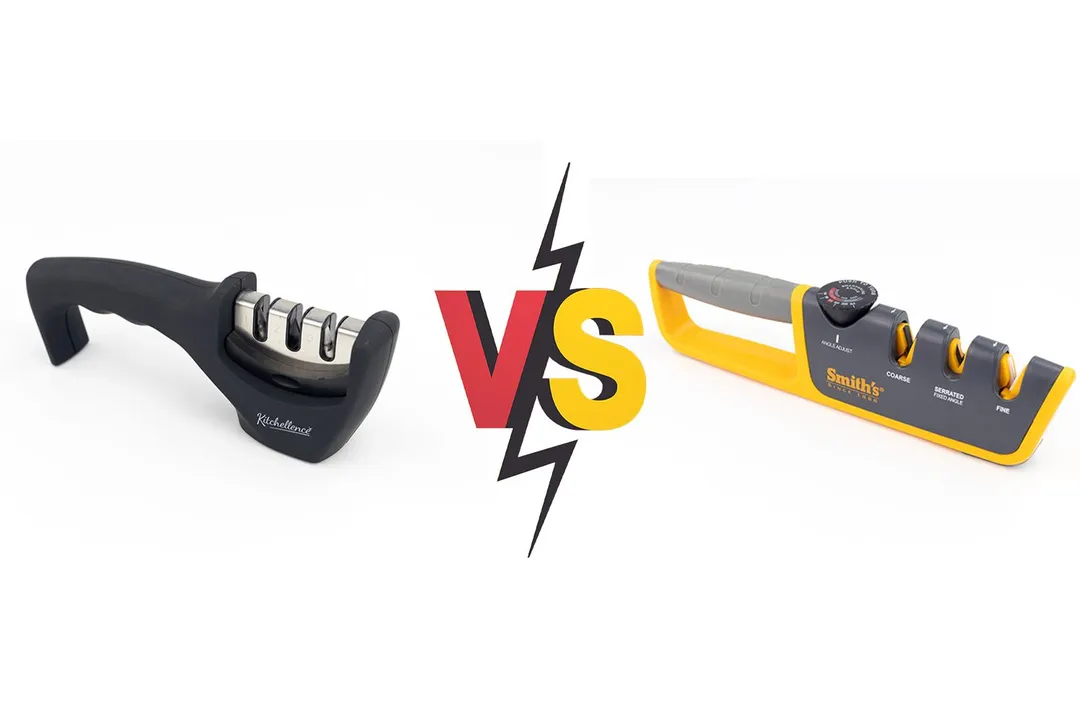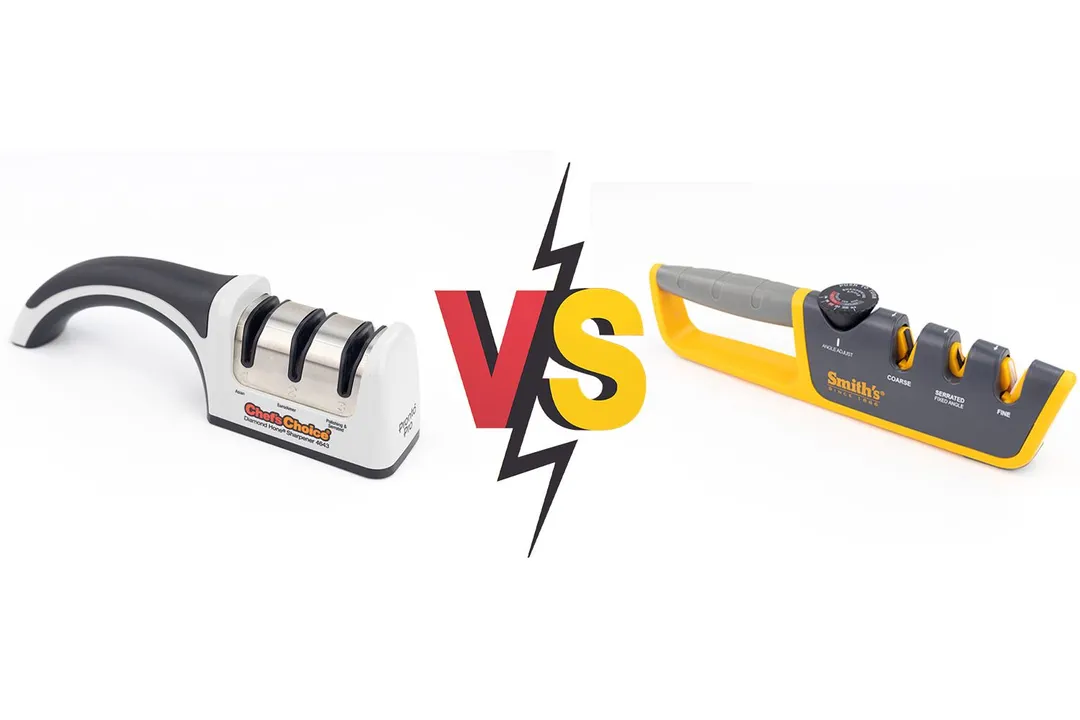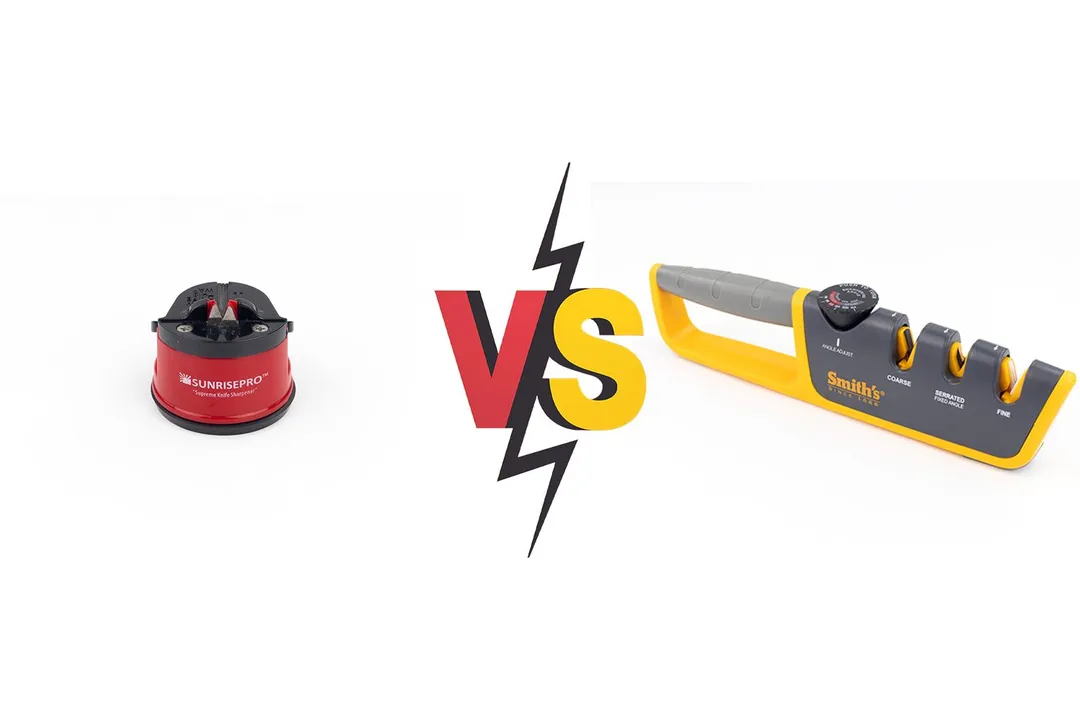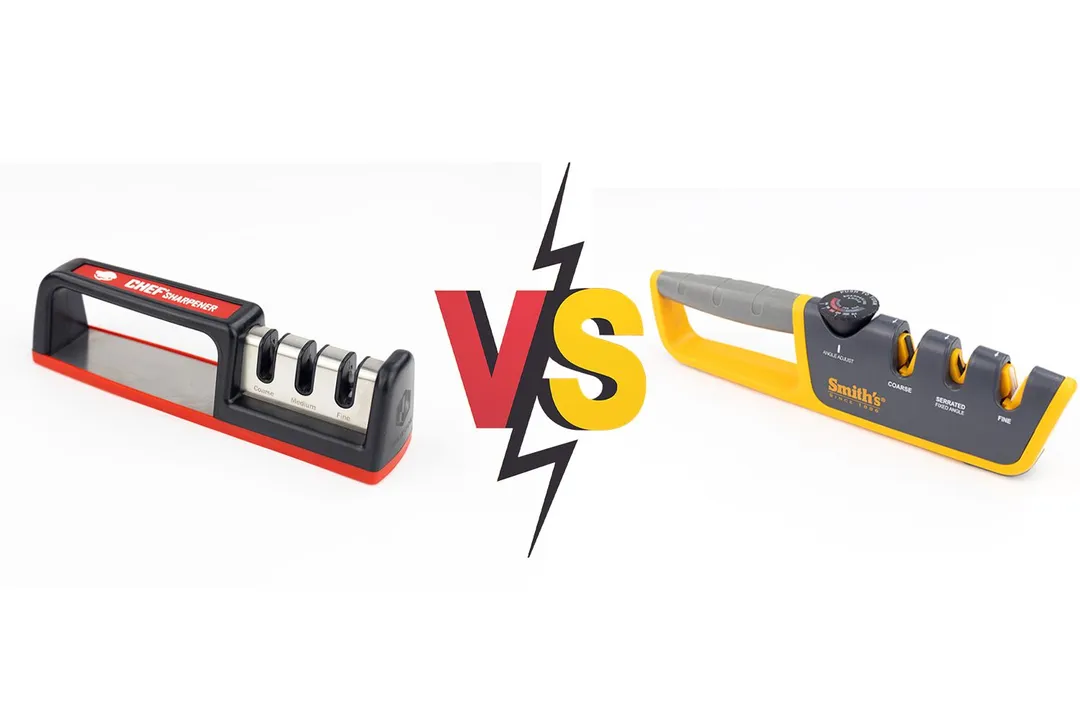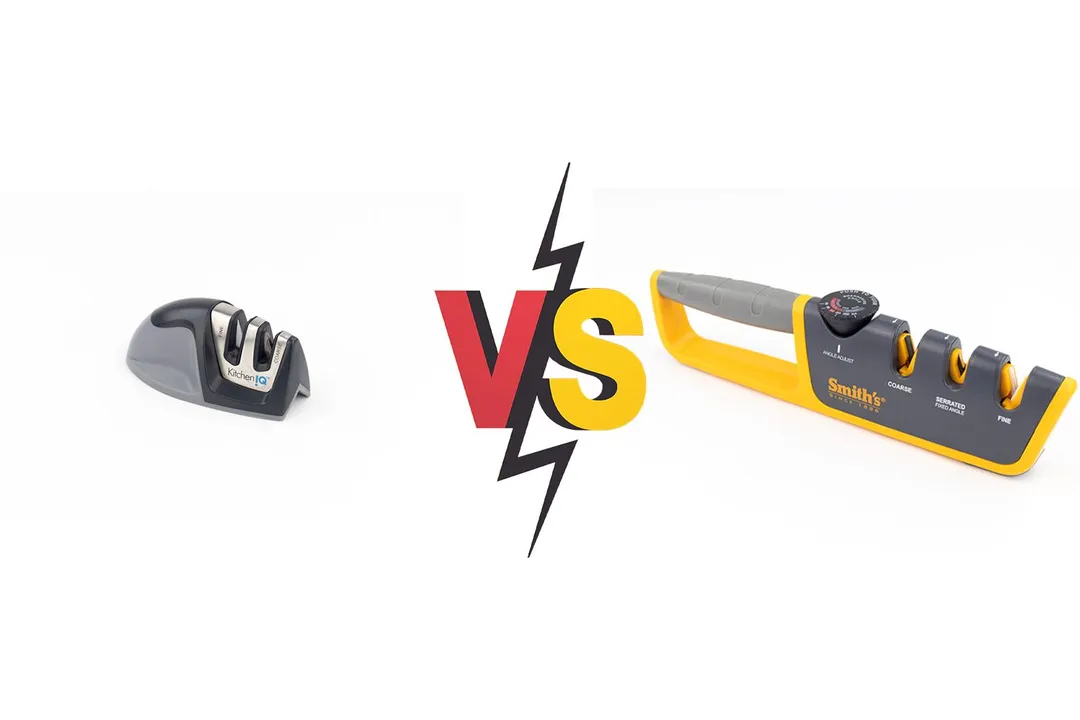Our recommendations are made independently through Research & Testing. We may receive commissions from purchases made via our links.
Smith's 50264 Adjustable vs. PriorityChef 2-Stage Sharpener Side-by-Side Comparison
Read our detailed review and comparison between the Smith's 50264 adjustable and the PriorityChef 2-stage sharpener.
Smith's Adjustable
Tested Using Methodology v1.1PriorityChef
Tested Using Methodology v1.1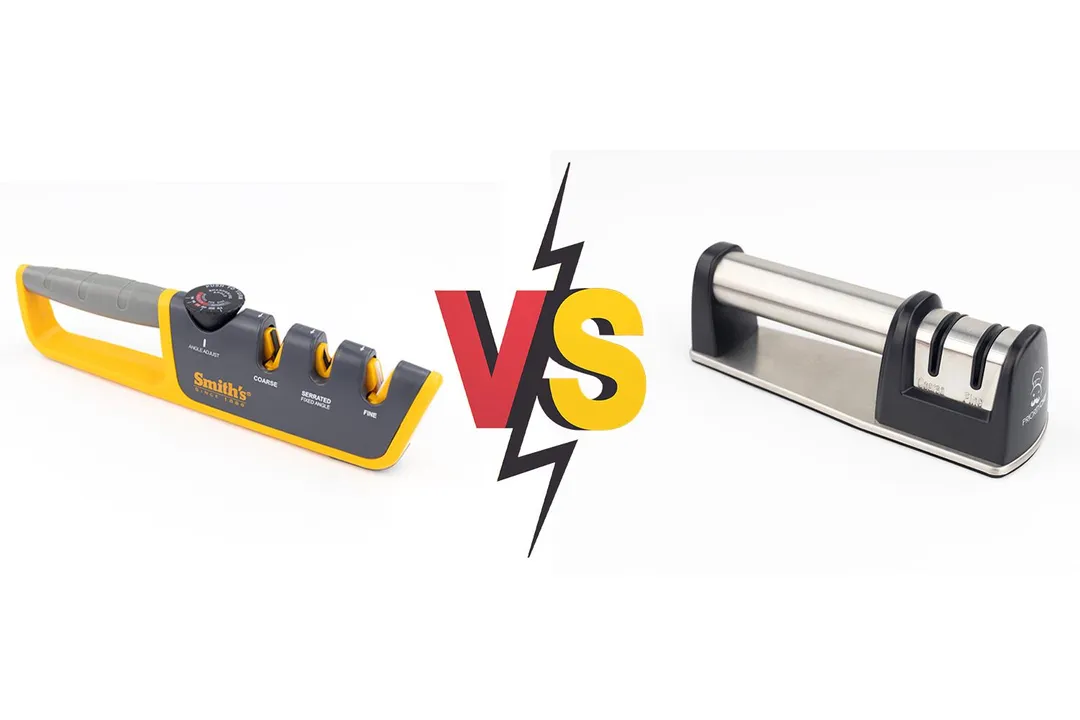
Overall Verdict
The Smith's 50264 is an example of a product that looks better than it can perform. The PriorityChef is a mirror opposite.
The Smith's 50264 comes with an adjustable edge angle, which in theory should allow you to find a balance between sharpness and edge retention. In practice, however, its abrasive blades did sharpen quickly and effectively, but the flexibility resulted in a rough, wavy knife edge. The device’s long and narrow base means you have to exert force to keep it balanced during sharpening.
The PriorityChef, on the other hand, has a rather plain design, but its low center of gravity and wide base offer good balance and stability. Its abrasive discs can quickly produce a sharp and smooth edge without the excessive removal of knife material. It’s the better choice, both in efficiency and design.
Pros & Cons
- Angle-adjustable sharpening
- Sharpening slot for serrated blades included
- Wide slot inserts
- Replaceable abrasives (sold separately)
- Modest height, low center of gravity
- Full, flat base
- Gimmick-free design
- Great edge retention
- Shears off a considerable amount of metal
- Awkward slot structure
- Long, narrow base
- Cheap base pad
- Small slot openings
Key Specs
Where to Buy
*You help support HealthyKitchen101's product testing and reviews by purchasing from our retail partners.
Analysis and Test Results
Performance
Sharpening Time to Cut a Lemon
Material Retention
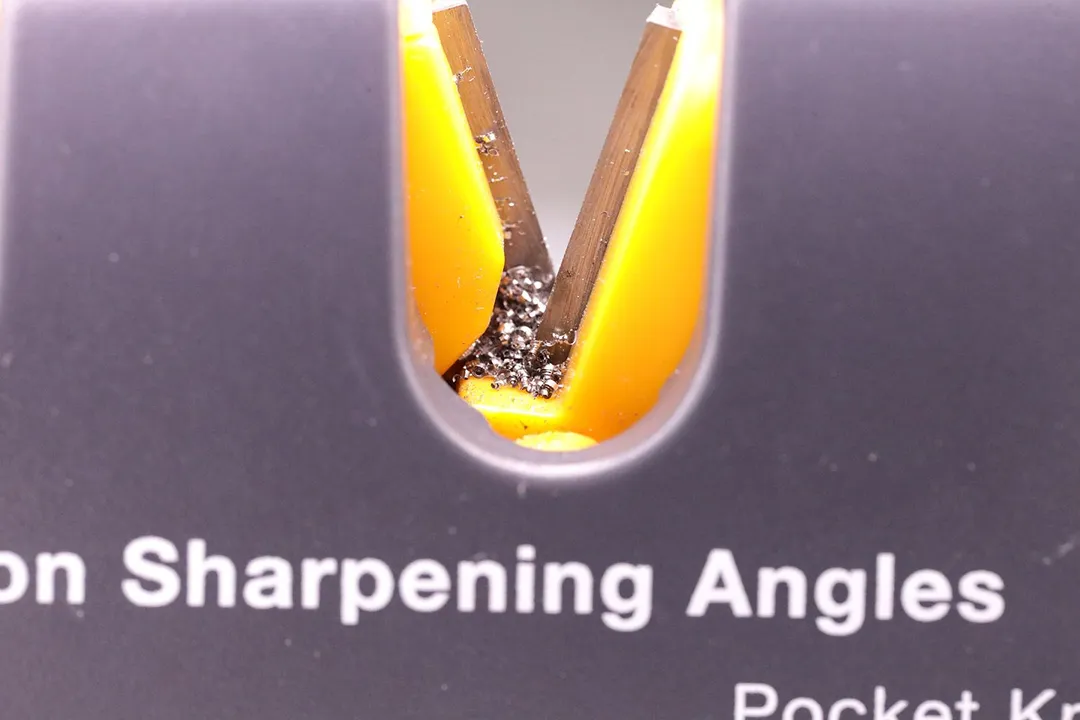

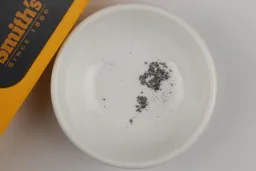
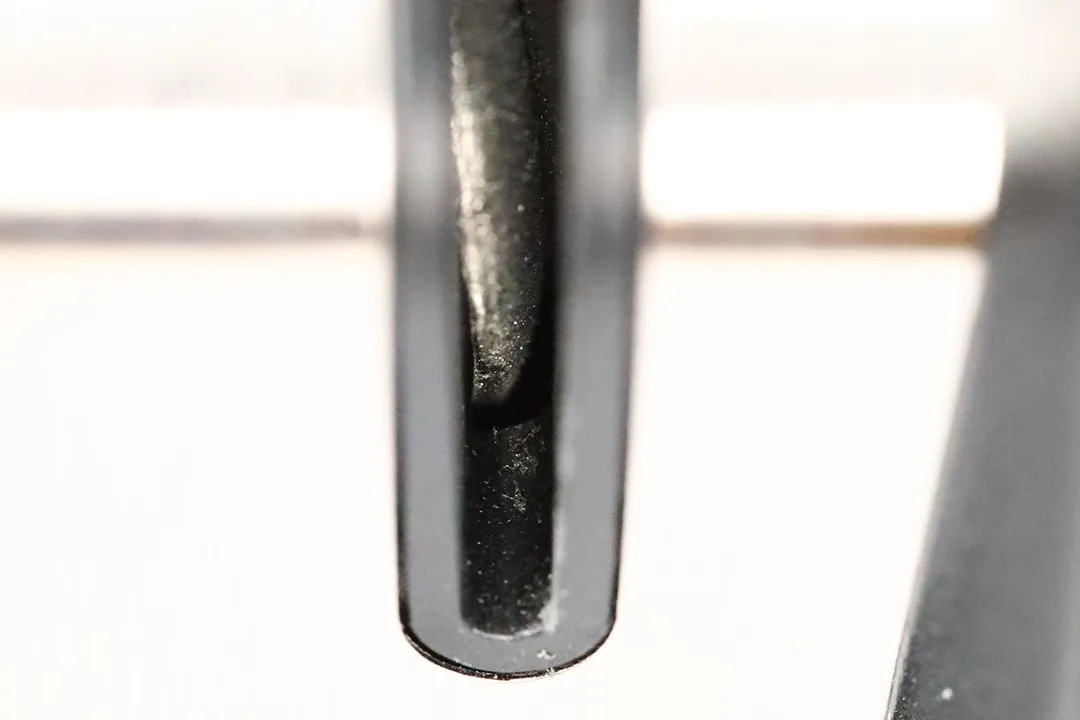
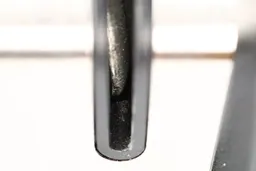
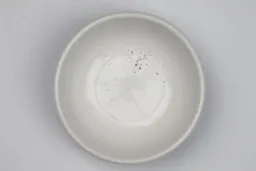
Maximum Sharpness Achieved
Edge Smoothness

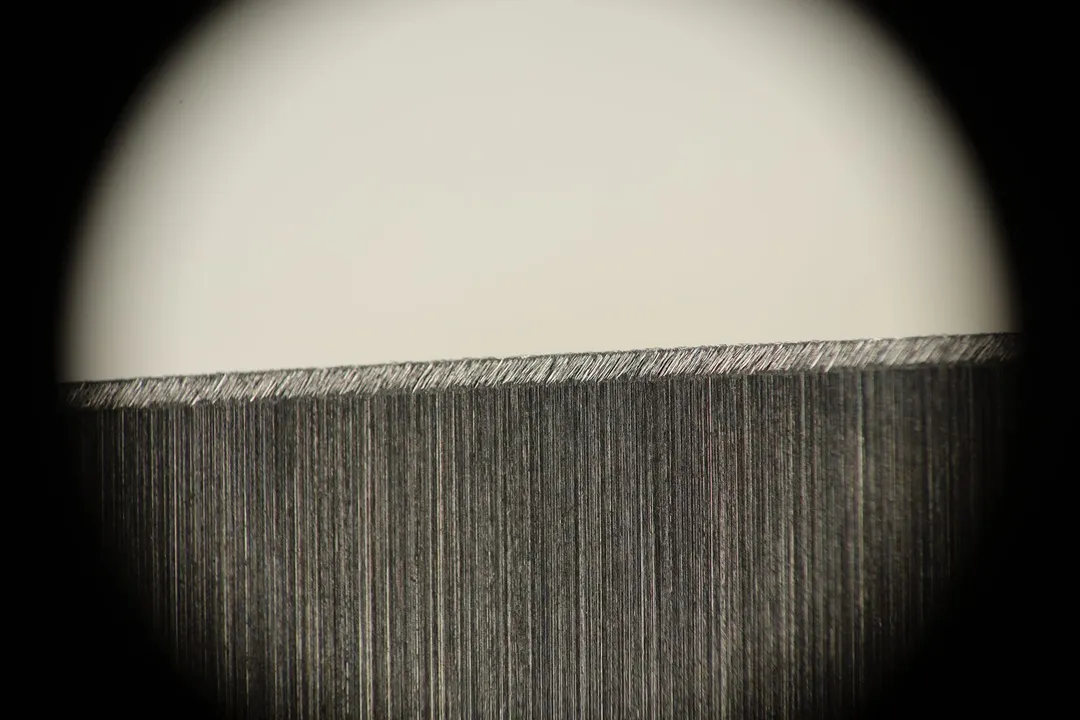
Design
In the Box
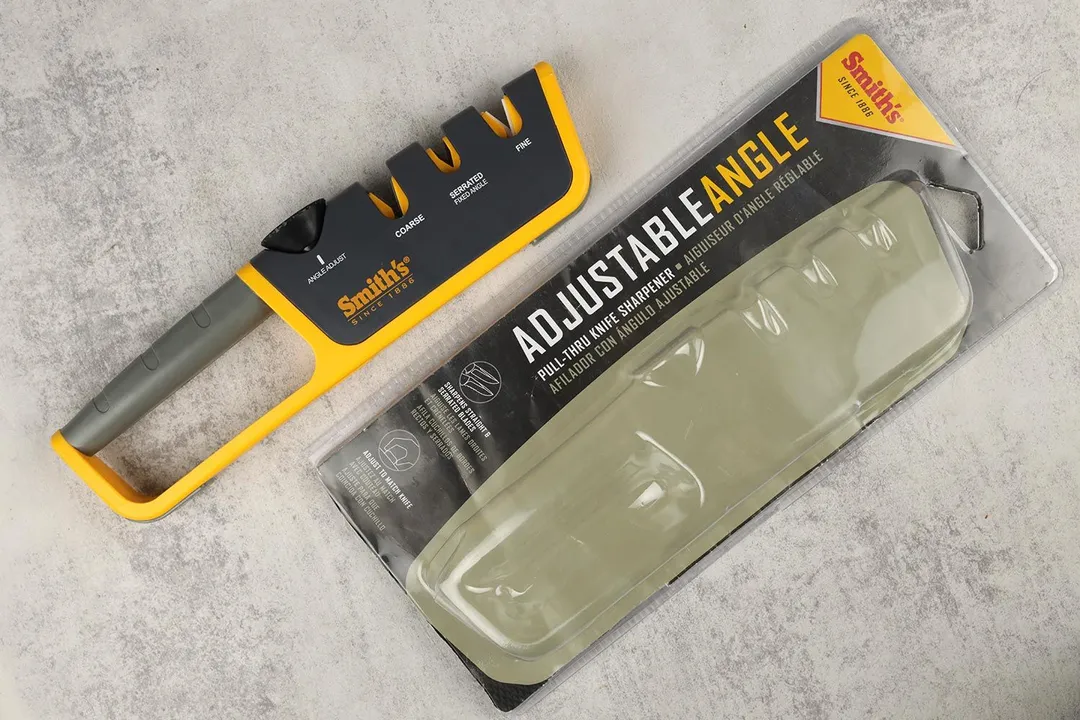
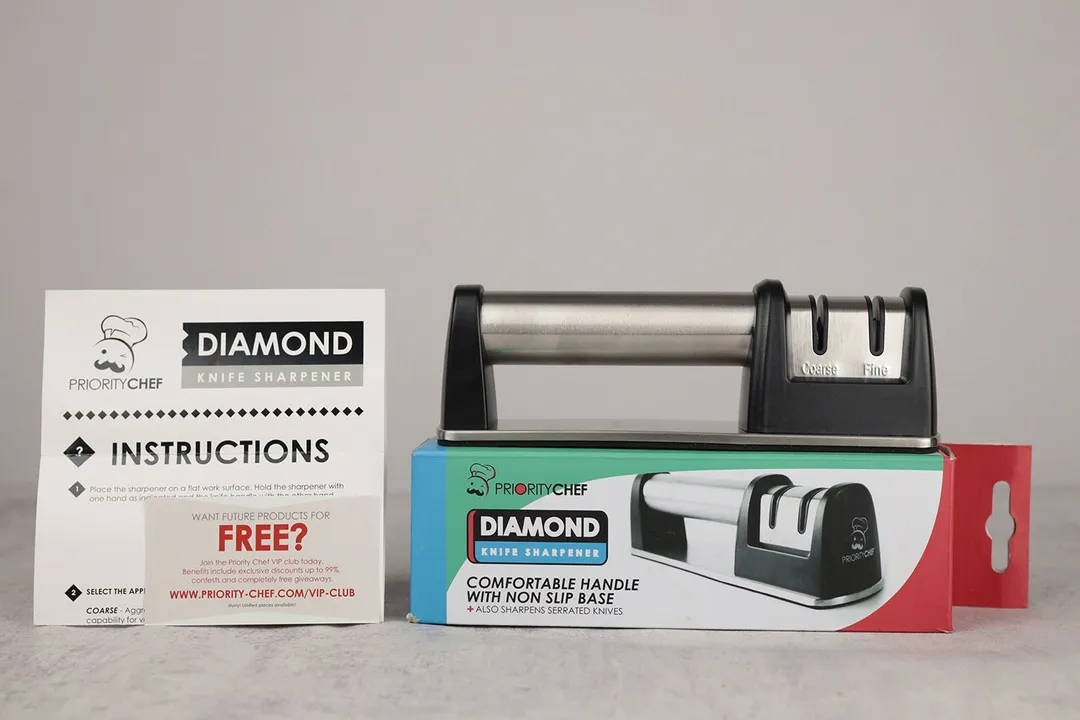
Dimensions
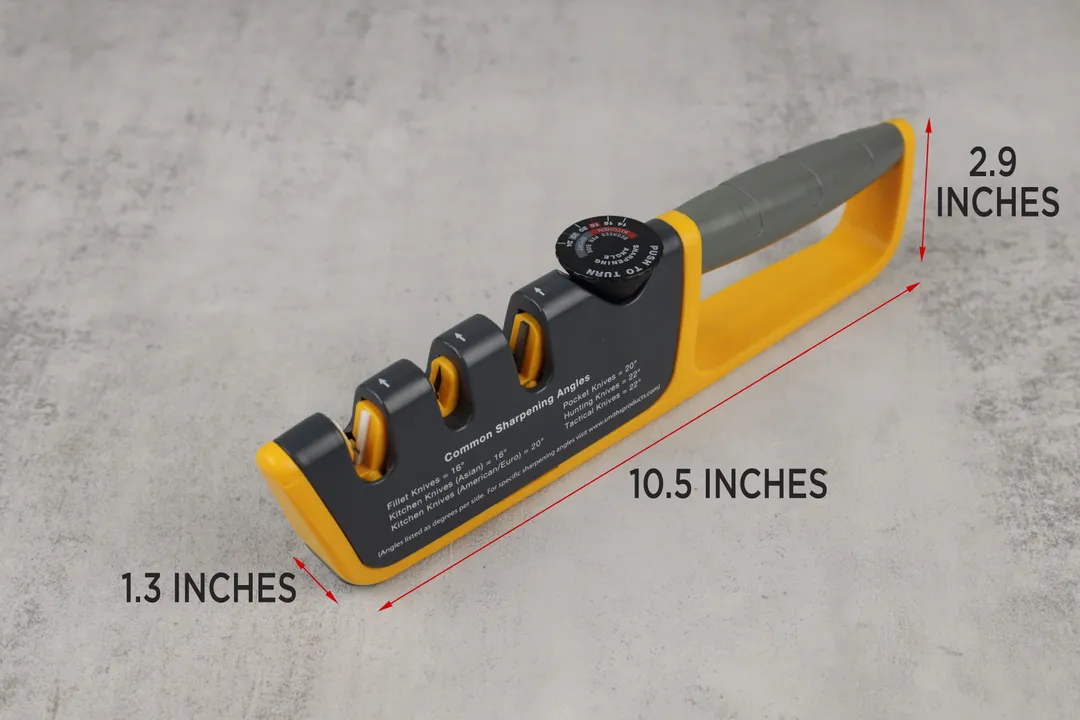
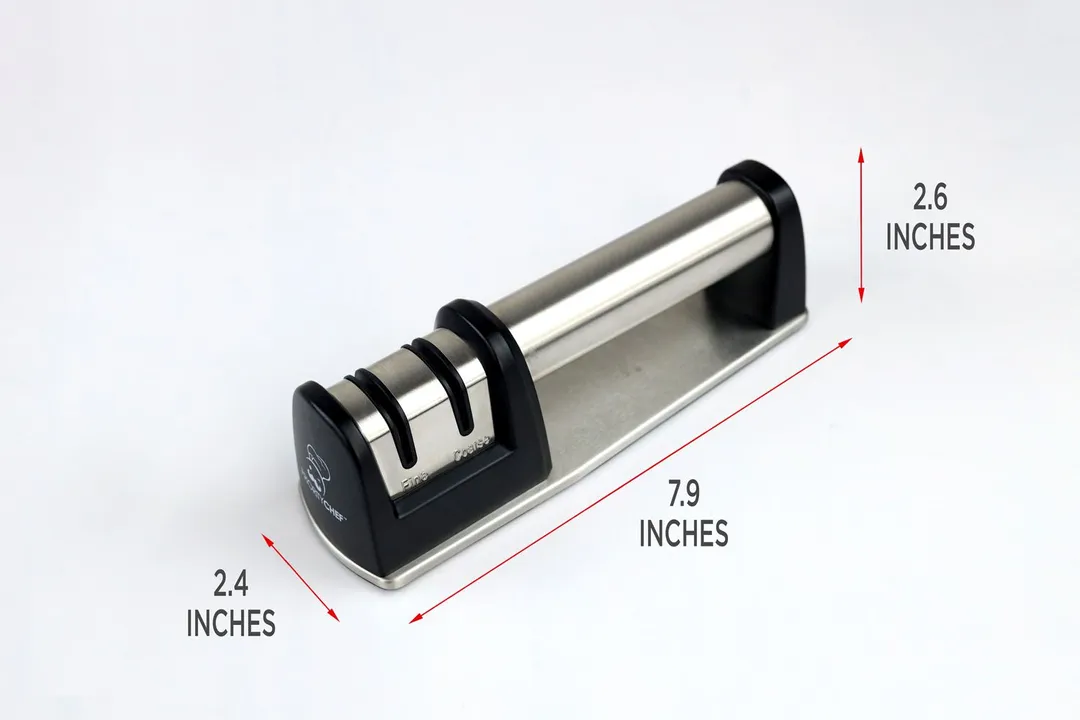
Build Quality
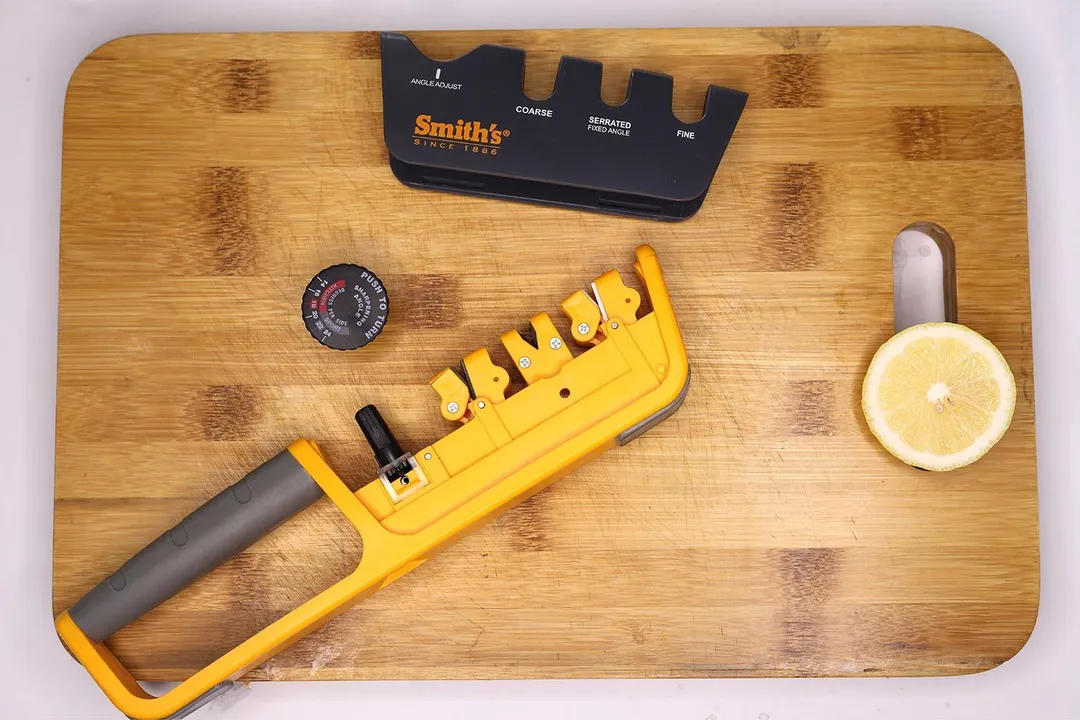
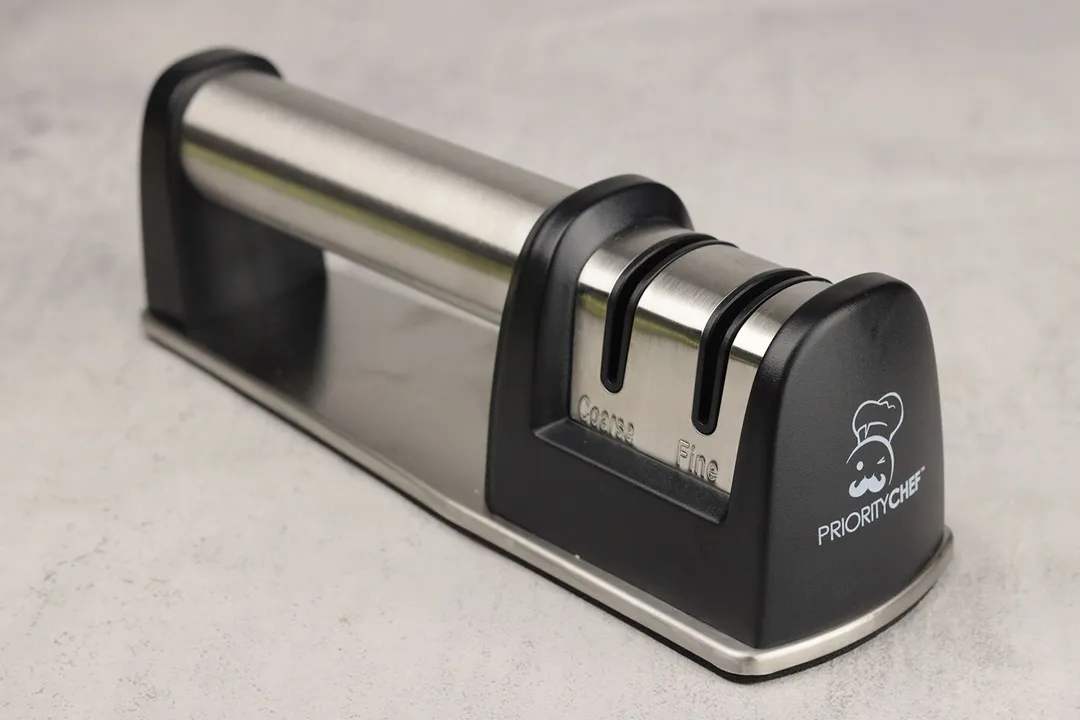
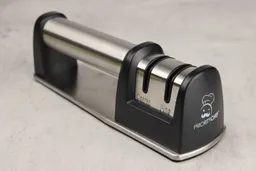

Working Section
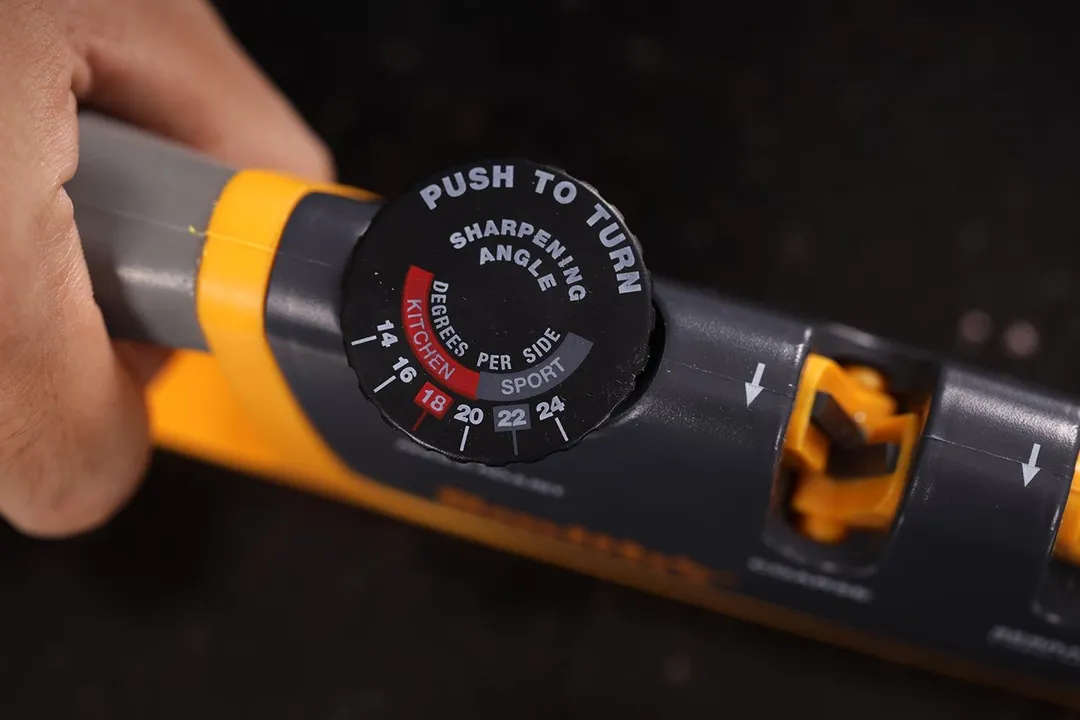
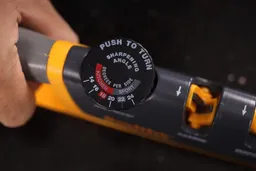

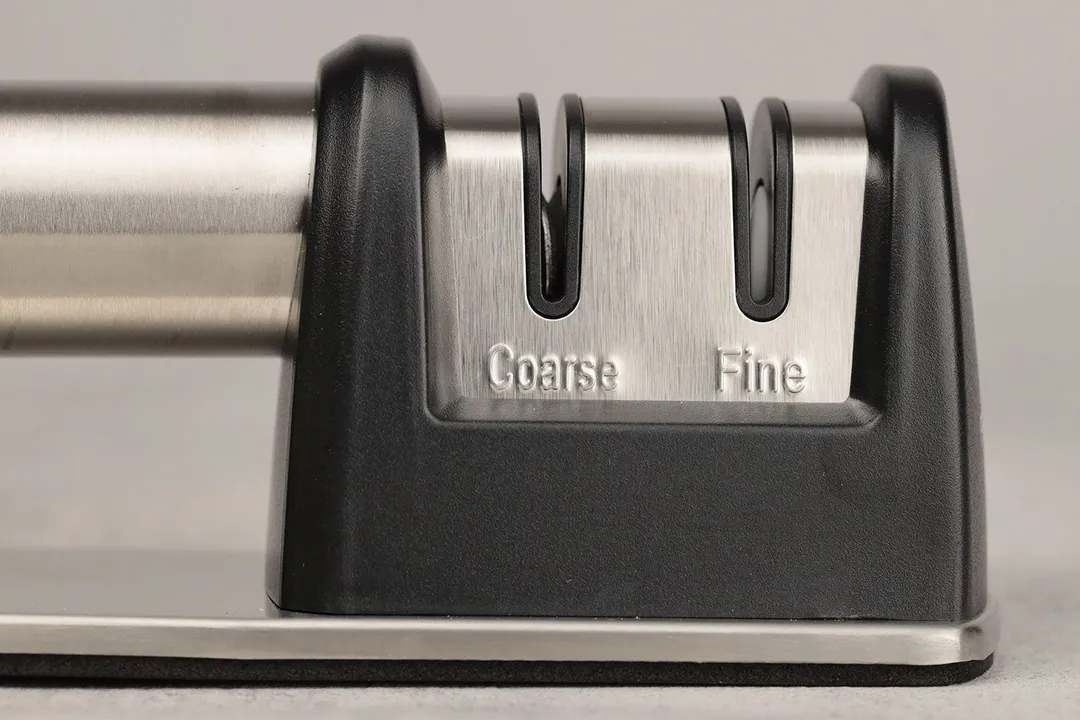
Base
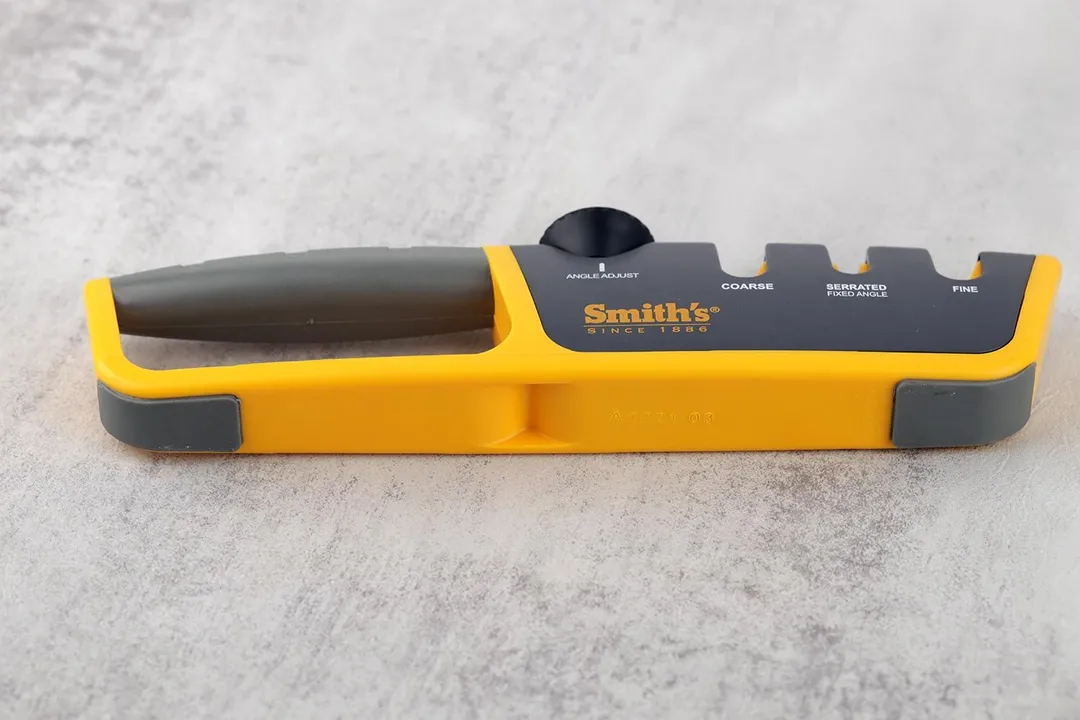
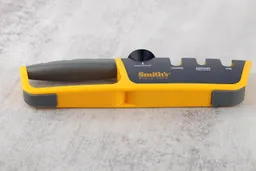
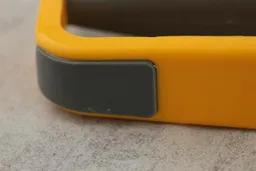
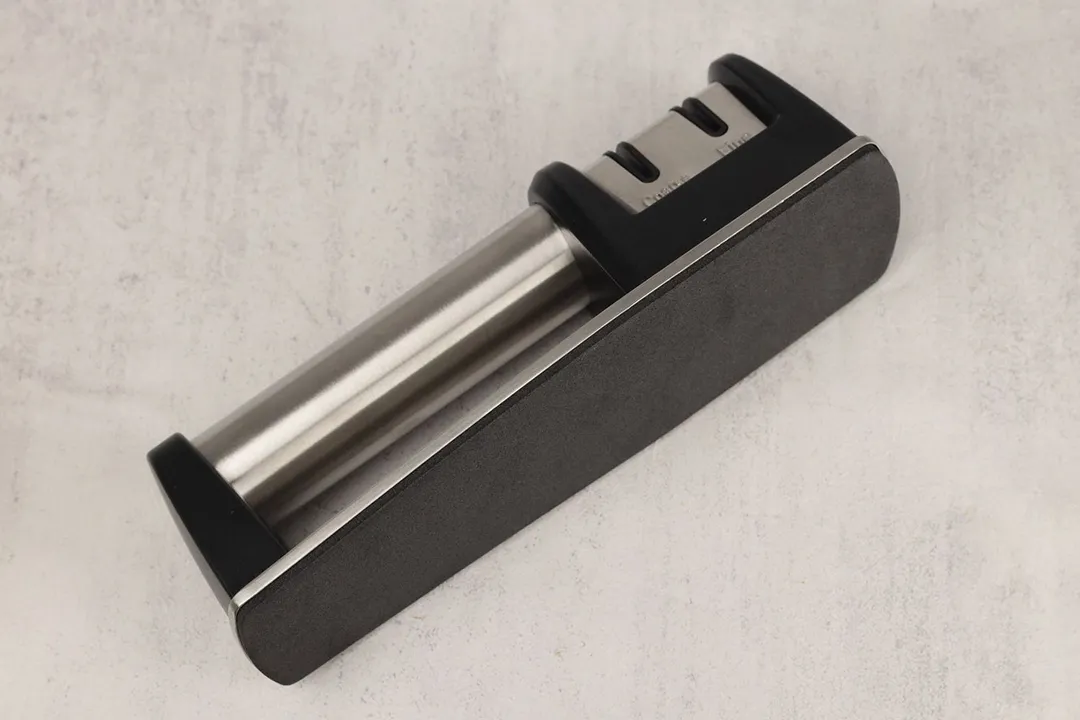
Grip
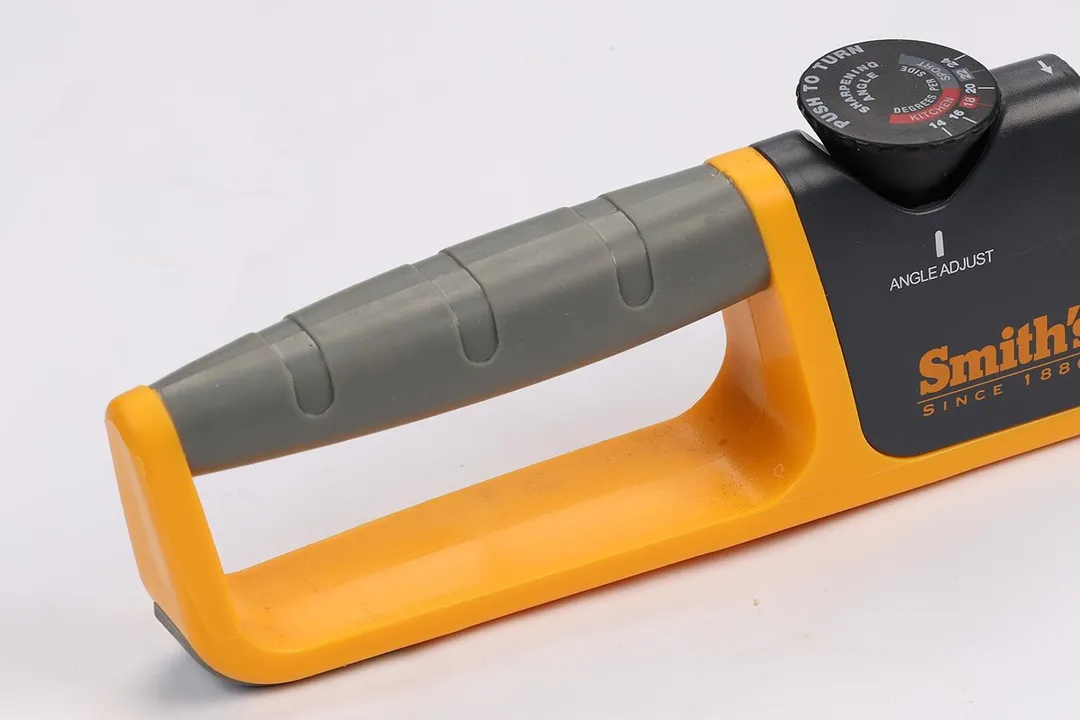
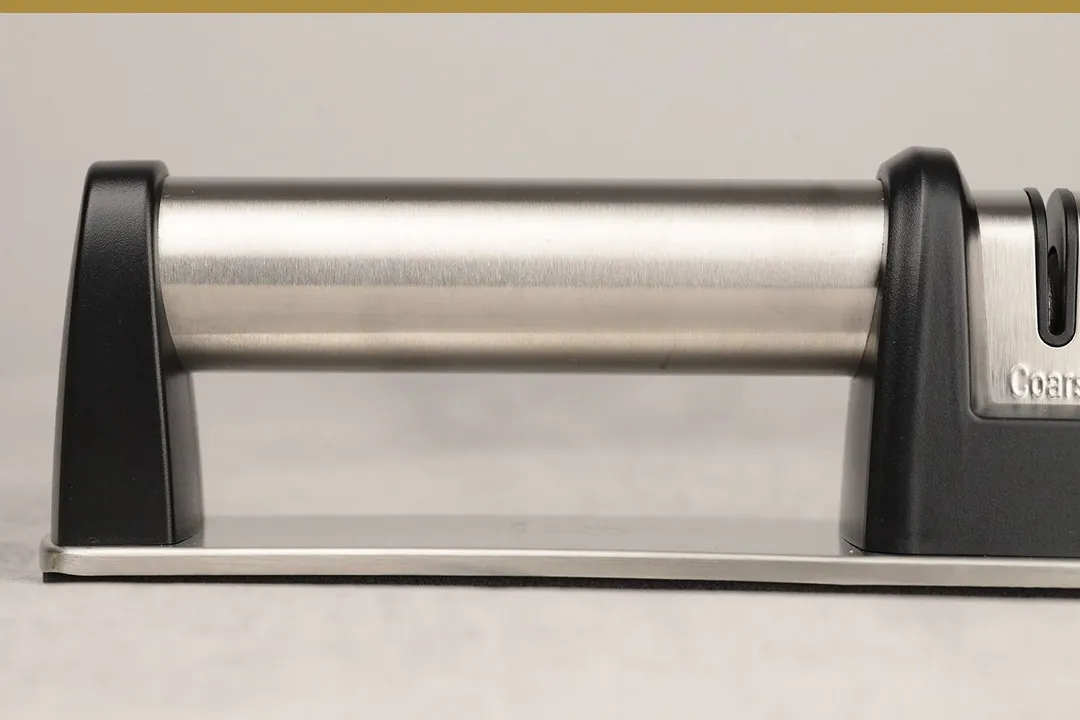
Usability
Slot Arrangement
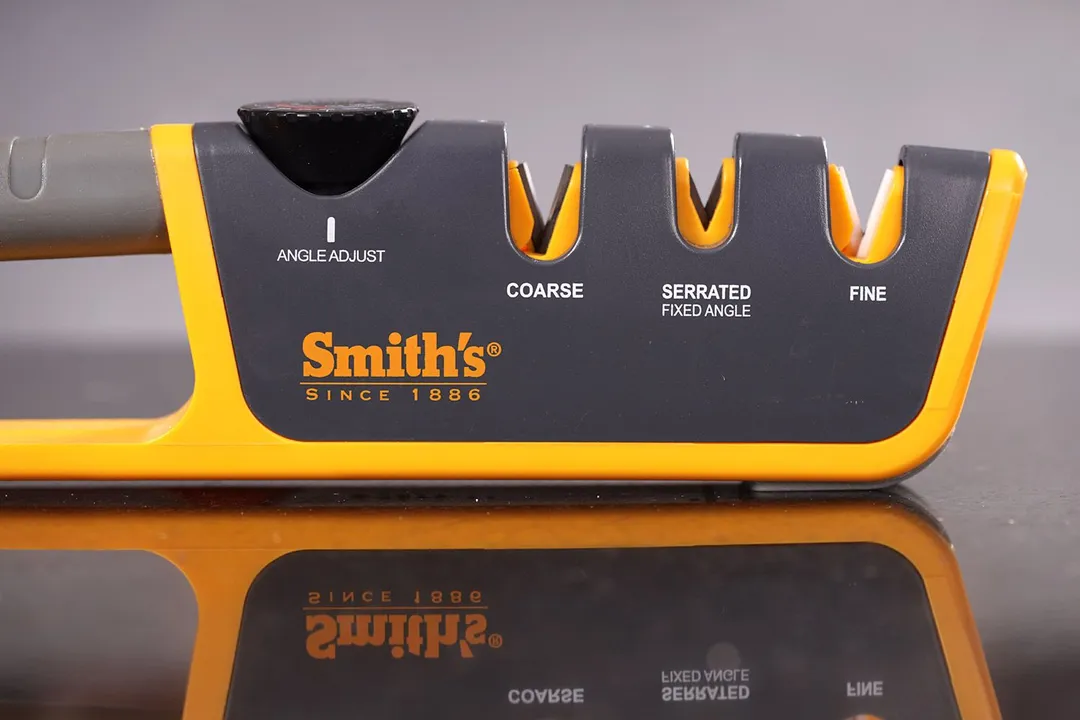

Insertion
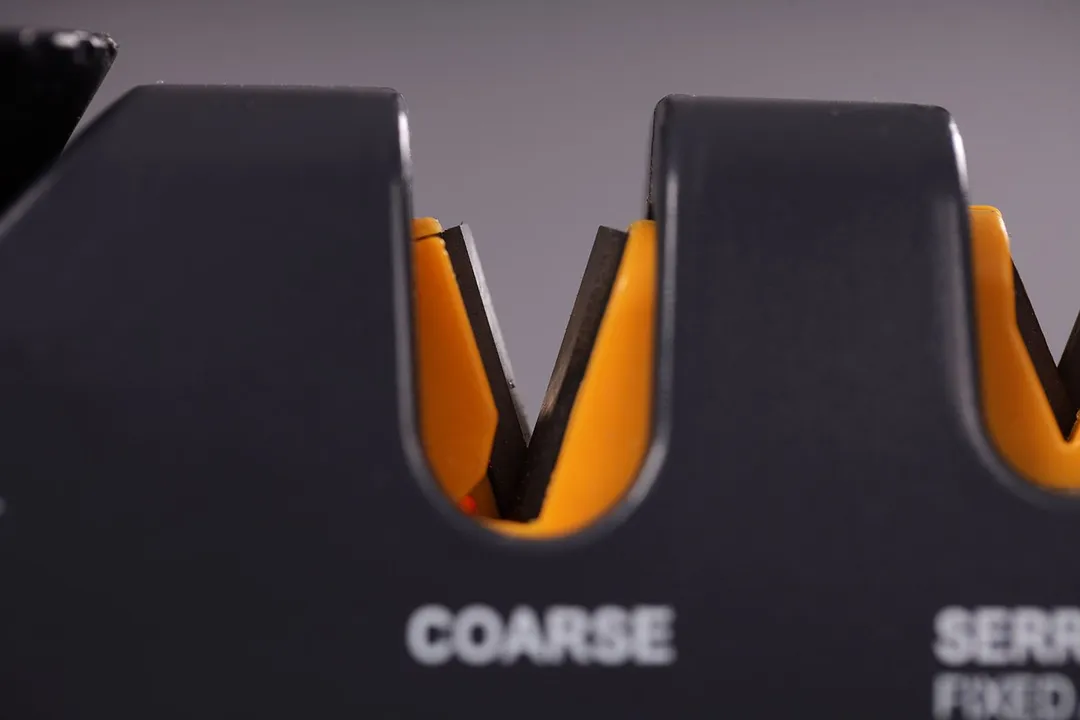
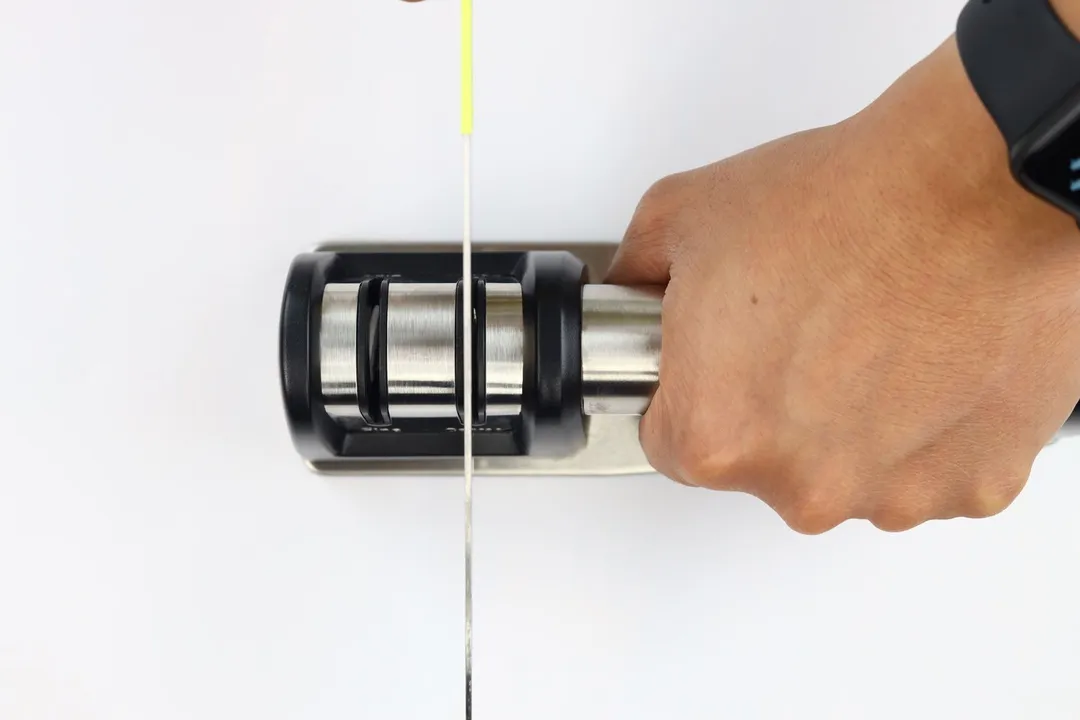
Pulling Through

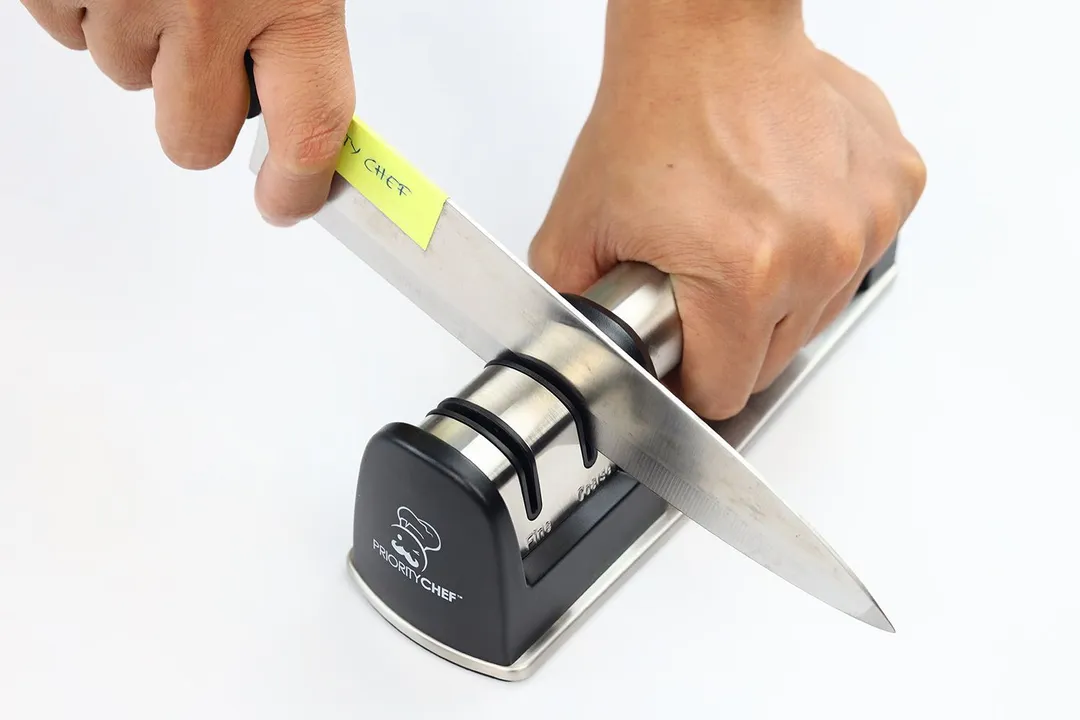
Stability on Clean Surface
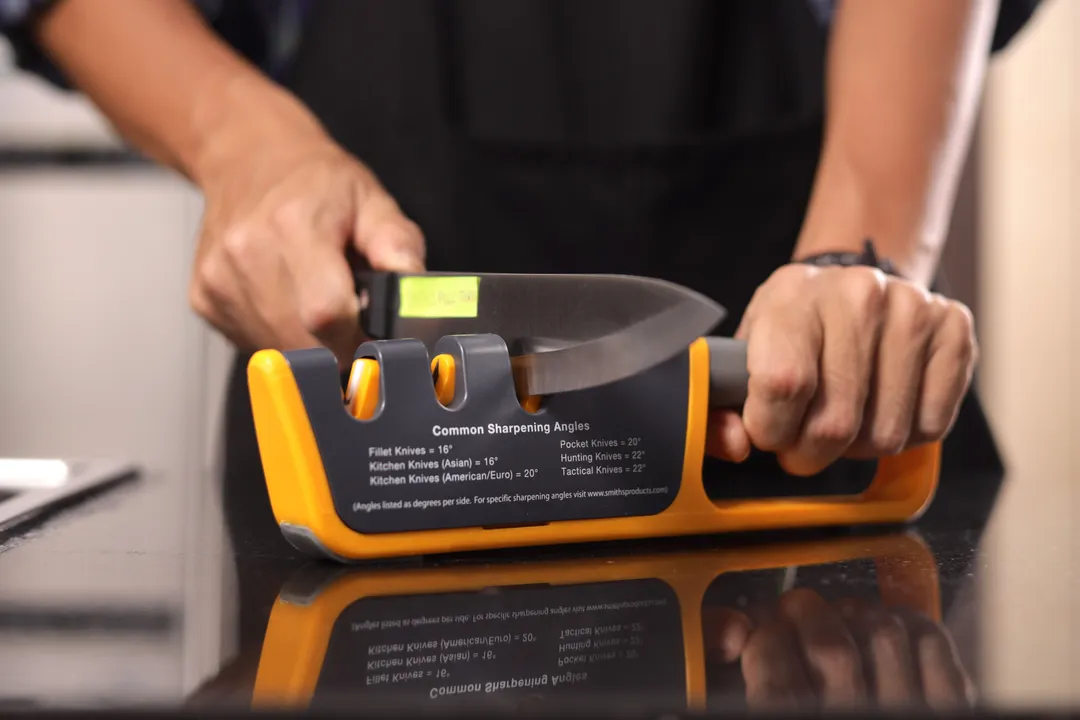
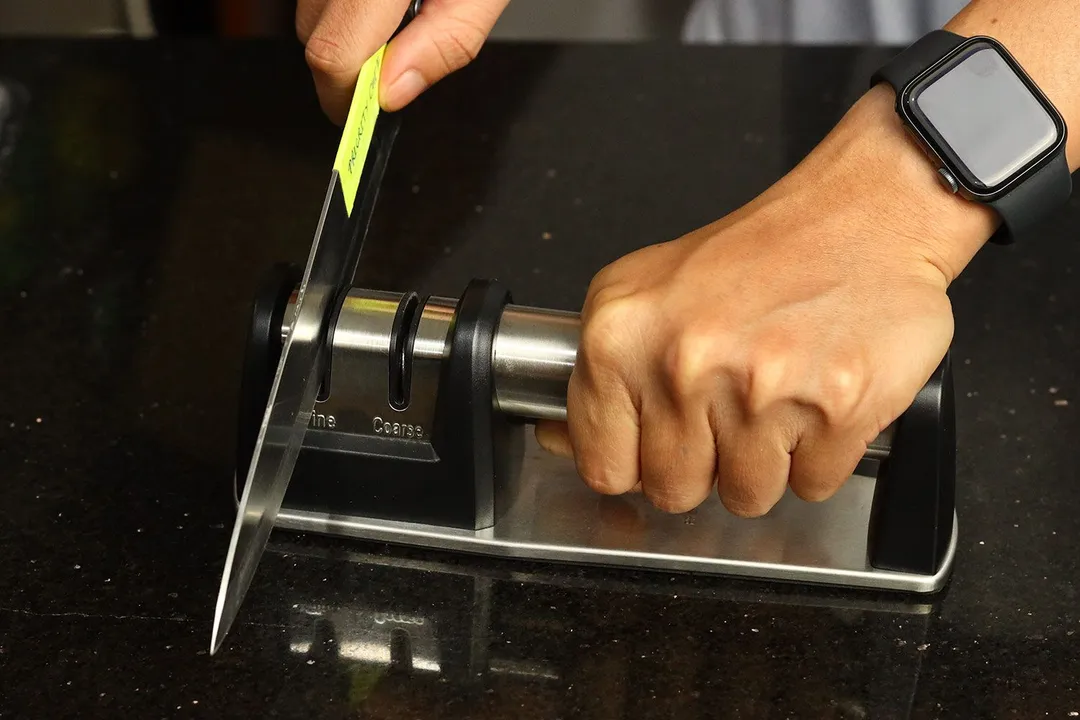
Stability on a Wet and Dirty Surface
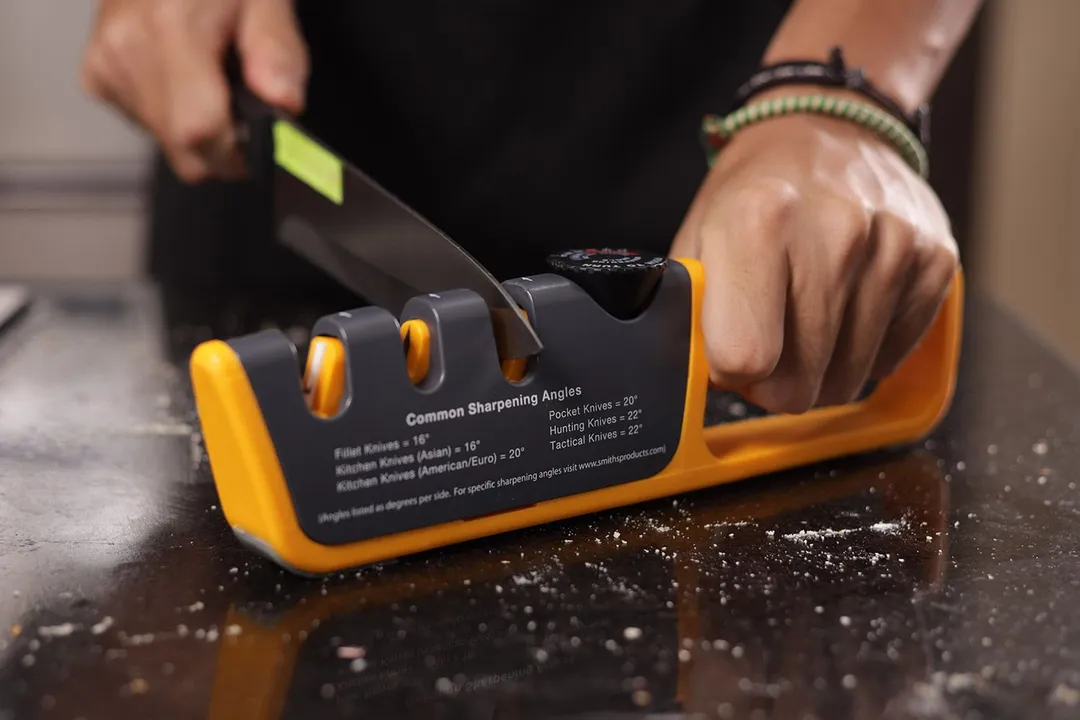

Behind the Comparison
Anh Ngo is a writer with 9 years experience at different media outlets, covering from public news and events to product testing and analysis. At HealthyKitchen101, she works across different departments, communicating closely with its network of writers, editors, and health, tech, and search engine experts to provide a meaningful and pleasant reading experience for visitors.
Lap is Head of the Research, Testing, and Review Team (RTR Team) at HealthyKitchen101.com, where he directs and supervises the testing of kitchen gadgets and appliances.
Nguyen Ntk is a graphic designer, photographer, and videographer whose philosophy centers around respecting and celebrating the beauty of reality. Through his lenses, Nguyen strives to capture the true essence of objects and events, showcasing and highlighting authentic features without distortion or exaggeration.



